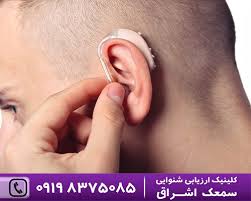Pest control is an essential service that helps maintain health and safety by managing or eliminating pests that can invade homes, businesses, and agricultural areas. With an increasing focus on environmental sustainability and health consciousness, modern indianapolis bed bug exterminator methods have evolved significantly. This article explores contemporary pest control techniques, their benefits, and best practices for effective management.
1. The Evolution of Pest Control
Traditionally, pest control relied heavily on chemical pesticides, which were effective but raised concerns about toxicity and environmental impact. Today, the field has advanced to incorporate a range of methods that prioritize safety and sustainability. Integrated Pest Management (IPM) is one such approach, combining biological, cultural, physical, and chemical tools to manage pest populations effectively.
2. Modern Pest Control Techniques
a. Biological Control: This method uses natural predators or parasites to control pest populations. For example, introducing ladybugs in a garden can help manage aphid infestations. Biological control is a sustainable practice that minimizes the need for chemical interventions.
b. Mechanical and Physical Control: Mechanical methods include traps and barriers designed to prevent pests from entering or reproducing. For instance, using insect nets, sealing entry points, and installing physical barriers can be effective in managing pests without chemicals.
c. Chemical Control: While still in use, modern chemical pest control emphasizes safer, targeted applications. Low-toxicity pesticides and biorational products, which affect only specific pests, are preferred. This approach reduces the risk of harm to humans, pets, and non-target organisms.
d. Environmental Control: This technique involves modifying the environment to make it less conducive to pest activity. Proper sanitation, water management, and habitat modification are crucial in preventing infestations. For example, removing standing water and sealing cracks can deter mosquitoes.
e. Monitoring and Early Detection: Advanced technology, such as electronic monitoring systems and pheromone traps, allows for early detection of pest activity. This proactive approach helps in identifying and addressing infestations before they become severe.
3. Benefits of Modern Pest Control
a. Health and Safety: Modern pest control methods prioritize the health and safety of humans and animals. Reduced reliance on harmful chemicals minimizes exposure risks, contributing to a healthier living environment.
b. Environmental Impact: Sustainable pest control practices help protect ecosystems and biodiversity. By reducing the use of broad-spectrum pesticides, these methods help preserve beneficial insects and reduce soil and water contamination.
c. Cost-Effectiveness: While initial costs for advanced pest control techniques might be higher, they often result in long-term savings. Effective management reduces the need for frequent treatments and prevents costly damage to property and crops.
d. Compliance and Regulation: Adhering to modern pest control standards ensures compliance with environmental regulations and industry best practices. This not only avoids legal issues but also promotes a positive reputation for businesses and property owners.
4. Best Practices for Effective Pest Control
a. Education and Awareness: Understanding the types of pests and their behavior is crucial for effective management. Educating yourself and others about pest control methods and prevention strategies can significantly reduce pest problems.
b. Regular Maintenance: Regular inspections and maintenance of property can help identify potential pest entry points and breeding grounds. Keeping environments clean and well-maintained minimizes the likelihood of infestations.
c. Professional Services: Engaging professional pest control services can provide expertise and access to advanced technologies. Professionals can design and implement tailored pest management plans based on specific needs and conditions.
d. Integrated Approach: Combining multiple pest control methods in an integrated approach maximizes effectiveness. Using a combination of biological, mechanical, and chemical methods can address various aspects of pest management.
e. Feedback and Adaptation: Continuously evaluating the effectiveness of pest control strategies and adapting them as needed ensures ongoing success. Feedback from pest control services and monitoring systems can guide adjustments and improvements.
Conclusion
Modern pest control is a dynamic and evolving field that balances effectiveness with environmental and health considerations. By incorporating a variety of techniques and adhering to best practices, individuals and businesses can manage pests in a way that is both efficient and sustainable. Embracing these advancements not only protects property and health but also contributes to a healthier planet.

